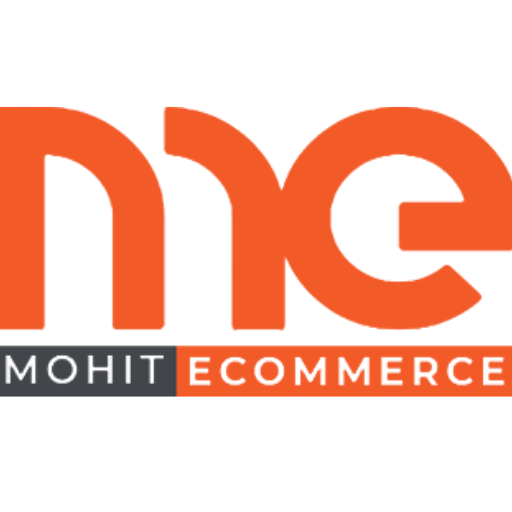When venturing into the dynamic eCommerce landscape of India, understanding the diverse consumer behavior and preferences can be intriguing. To navigate this market successfully, you must decipher the intricacies of localization, payment gateways, and logistics. However, the key to thriving lies in revealing the secrets to establishing trust and credibility. By discovering the nuances of customer trust in the Indian marketplace, you can pave the path to sustainable growth and long-term success.
Key Takeaways
- Conduct thorough market research and define target audience.
- Utilize digital technology and optimize logistics processes.
- Partner with reputable logistics companies for timely delivery.
- Focus on niche markets for personalized shopping experiences.
- Invest in secure payment gateways like Paytm, Razorpay.
Introduction to Starting an eCommerce Business in India

When starting on the journey of starting an eCommerce business in India, it’s important to understand the unique landscape and opportunities that this rapidly growing market offers. In India, the eCommerce marketplace is booming, making it an attractive space for entrepreneurs looking to establish an online business. Various platforms like Flipkart, Amazon, and Snapdeal dominate the market, offering a wide reach to potential customers.
Understanding current market trends is crucial for success, as the digital marketing landscape in India is evolving rapidly. Effective strategies in digital marketing can help you reach your target audience and drive sales.
Moreover, managing aspects such as shipping and inventory of products is essential for a seamless operation. With the increase in online shopping in India, ensuring efficient shipping processes and maintaining an updated inventory can set your eCommerce business apart.
Research and Planning for Your eCommerce Venture

Conducting in-depth research and meticulous planning are foundational steps for launching a successful eCommerce venture in the dynamic Indian marketplace. Start by delving into extensive market research to understand the current landscape, industry trends, and consumer behaviors. Define your target audience and conduct a detailed competition analysis to identify gaps and opportunities.
Craft a solid business plan outlining your business model, marketing strategy, product sourcing approach, and logistics planning. Develop financial projections that encompass initial investment, operating costs, and revenue forecasts. Your business plan should be a strategic roadmap that guides your eCommerce venture towards success in the competitive Indian market.
How To Start Ecommerce Business in India?

To kickstart your eCommerce business in the vibrant Indian marketplace, it’s vital to begin with a well-thought-out strategy that aligns with the unique characteristics of the local market. Here are three key steps to help you start your e-commerce business in India successfully:
- Market Research and Business Plan: Conduct thorough market research to understand the specific needs and preferences of Indian customers. Develop a detailed business plan that outlines your objectives, target audience, marketing strategies, and financial projections.
- Utilize Digital Technology: Harness digital technology to create a user-friendly online shopping experience for your customers. Invest in a reliable e-commerce platform, secure payment gateways, and robust cybersecurity measures to build trust with your target audience.
- Optimize Logistics Process: Streamline your logistics process to guarantee timely delivery of products to customers across India. Partner with reputable logistics companies to manage inventory, shipping, and returns efficiently, catering to the diverse market demand in different regions of the country.
10 Tips To Choose the Right Products for Your eCommerce Store

To secure the success of your eCommerce store, begin by conducting thorough market research to identify trends and gaps in the market.
Understanding your target audience is key in selecting products that align with their needs and preferences.
Evaluate product profitability, consider demand, and assess quality to make informed decisions about which products to feature in your online store.
1. Conduct Market Research
When selecting products for your eCommerce store, it’s important to conduct thorough market research to make certain you’re offering items that align with consumer demand and trends. Here are three key steps to help you choose the right products for your online store:
- Market Size Analysis: Start by evaluating the size of the market for the products you’re considering. Look at the current demand and growth potential to confirm there’s a viable market for your offerings.
- Competition Analysis: Research your competitors to understand what products they’re selling, how they’re pricing them, and what unique selling points they offer. This information can help you identify gaps in the market or areas where you can distinguish your products.
- Industry Trends and Consumer Preferences: Stay up to date with industry trends and consumer preferences. This will help you anticipate changes in demand and adjust your product selection accordingly to fulfill the needs of your target market.
2. Understand Your Target Audience
Understanding your target audience is essential for selecting the right products for your eCommerce store. By analyzing customer behavior, engagement, and loyalty, you can build a strong customer base and cater to their needs effectively. Start by identifying your potential customers and understanding their preferences, shopping habits, and demographics.
This information will help you tailor your customer services, marketing efforts, and overall customer experience to match their expectations.
When considering which products to offer in your eCommerce store, prioritize convenience for customers. Choose items that align with your target audience’s interests and provide them with value. By offering products that resonate with your customers, you can enhance customer satisfaction and encourage repeat purchases, fostering customer loyalty.
3. Evaluate Product Profitability
For effective decision-making in your eCommerce venture, evaluating product profitability is pivotal. When selecting products for your online marketplace, keep in mind the following key considerations:
- Product Quality: Guarantee that the products you choose meet high-quality standards to enhance customer satisfaction and build a positive reputation in the e-commerce industry.
- Sourcing Products: Research and identify reliable suppliers or manufacturers to source your products from, ensuring timely delivery and consistent product availability.
- Digital Products: Consider offering digital products in addition to physical ones to diversify your product offerings and cater to a wider range of customers in the online marketplace.
4. Consider Product Demand
To make informed decisions and optimize your eCommerce venture, understanding product demand is key. Conduct thorough market research to identify the needs and preferences of your target audience. Analyze your competition to see what products are successful in the market and where gaps exist. Validate your product ideas by verifying they meet customer needs and have a place in the market.
Identifying a niche market can help you stand out and cater to a specific consumer segment. Consider consumer behavior trends and preferences when selecting products for your eCommerce store. Carefully source your products to confirm quality and reliability, as this can impact customer satisfaction and repeat business.
Utilize demand forecasting techniques to project how well your products will sell in the future. By choosing products with high demand and aligning them with your target audience, you can increase the chances of success for your eCommerce business.
5. Assess Product Quality
To guarantee the success and reputation of your eCommerce store, it’s necessary to carefully assess the quality of the products you choose to offer. Ensuring high product quality is vital for customer satisfaction and retention in the competitive online marketplace. Here are three key tips for selecting the right products for your eCommerce store:
- Understand Your Target Market: Conduct thorough market research to identify the preferences and needs of your target customers. This will help you align your product offerings with the demands of your audience, ensuring higher sales and customer satisfaction.
- Evaluate the Range of Products: While selecting products for your eCommerce platform, consider offering a diverse range to cater to different customer preferences. Having a variety of products can attract a wider audience and increase the chances of customer engagement and repeat purchases.
- Focus on Product Quality: Prioritize quality over quantity when choosing the products to sell online. Customers value well-made, durable products, and delivering on quality can help establish trust and credibility for your online business.
6. Check Supplier Reliability
Validating the dependability of your suppliers is a vital aspect of selecting the right products for your eCommerce store. When launching an ecommerce business in the India marketplace, choosing reliable suppliers is key to maintaining a successful operation. To verify supplier dependability, research the reputation of potential partners, review customer feedback, and inquire about their experience in the digital marketplace.
It’s also essential to ensure that the suppliers offer quality wholesale products that align with the product ideas you have in mind.
Additionally, when assessing suppliers, consider their ability to provide the product in question consistently and reliably. Establish clear communication channels to address any issues promptly. Furthermore, opt for suppliers that offer dependable payment gateways to facilitate seamless transactions.
7. Evaluate Competition
When delving into the process of evaluating competition to choose the right products for your eCommerce store, it’s important to conduct thorough market research. Understanding your competitors and the market landscape will help you make informed decisions. Here are three essential steps to help you in this process:
- Analyze Competitors: Study your competitors’ pricing strategies, product offerings, and customer reviews. This analysis can provide valuable insights into areas where you can differentiate your store.
- Assess Customer Behavior: Utilize tools like Google Analytics to understand customer behavior on your website. This data can help you tailor your product selection to meet customer preferences and increase sales.
- Research SEO Strategies: Conduct keyword research to identify high-demand products in your niche. Implementing effective SEO strategies can improve your store’s visibility and attract more organic traffic.
8. Focus on Niche Markets
Now that you have a solid grasp of your competitors and market dynamics, it’s time to turn your attention to “Focus on Niche Markets” when selecting products for your eCommerce store.
When honing in on niche markets, consider aligning your business idea with specialized services or unique products that cater to a specific target audience. By focusing on a niche, you can differentiate yourself from the competition and create a more personalized shopping experience for your customers.
Utilize customization options on your e-commerce platform to tailor your offerings to the needs and preferences of your niche market. Develop a marketing strategy that highlights the exclusivity and value of your niche products or services.
9. Test Product Viability
To guarantee the success of your eCommerce business, conducting thorough research and testing the viability of your chosen products is essential. When considering the right products for your eCommerce store, follow these tips:
- Analyze Market Demand: Research the current trends in the eCommerce industry to identify products that are in high demand. Use tools like Google Trends or market research reports to understand consumer preferences.
- Evaluate Competition: Look into what your competitors are offering and assess their pricing, product quality, and customer reviews. Differentiate your product offerings to stand out in the market.
- Test with a Small Batch: Before investing heavily, test the viability of your products by starting with a small batch or conducting a pilot launch. Gather feedback from early customers to refine your offerings.
10. Stay Updated with Trends
To make informed decisions about the products you offer in your eCommerce store, staying updated with current trends is essential. Keeping abreast of trends in ecommerce businesses, marketplaces, digital marketing strategy, search engine optimization, payment methods, social media platforms, branding, privacy policies, artificial intelligence, and timely deliveries can give you a competitive edge. By understanding what is in demand, you can tailor your product offerings to meet the needs and preferences of your target audience.
Consider the following factors when choosing products for your eCommerce store:
| Ecommerce Trend | Key Aspect | Importance |
|---|---|---|
| Marketplaces | Diversify Platforms | Reach a wider audience |
| Digital Marketing Strategy | SEO Optimization | Increase online visibility |
| Payment Methods | Multiple Options | Enhance customer convenience |
| Social Media Platforms | Active Presence | Engage with customers |
Legal Requirements for Setting Up an eCommerce Business in India

When setting up an eCommerce business in India, it’s crucial to be well-versed in the legal requirements that govern this sector. To ensure a smooth setup process, consider the following key points:
- Register Your Business: Establish your eCommerce business as a private limited company to guarantee limited liability and a separate legal entity. This can be done through the Ministry of Corporate Affairs.
- Obtain GST Registration: It’s obligatory for eCommerce businesses in India to register for Goods and Services Tax (GST). This will enable you to collect and remit taxes on your transactions as mandated by law.
- Comply with Consumer Protection Laws: Given the diverse consumer base in the Indian eCommerce market, familiarize yourself with consumer-to-consumer (C2C) and consumer-to-business (C2B) regulations to safeguard both your business and your customers.
Adhering to these legal requirements won’t only establish your business from scratch on a solid legal foundation but also help you achieve your business goals efficiently.
How to Select an eCommerce Platform For Your Store?

Establishing a successful eCommerce business in India involves not only navigating through legal requirements but also making informed decisions about the platform you choose for your store. When selecting an eCommerce platform for your online store, consider factors such as technology capabilities, shopping experiences it offers, costs involved, and the delivery process it supports.
Begin by evaluating the scalability of the eCommerce platform to make sure it can grow with your business. Look for features that enhance shopping experiences, such as user-friendly interfaces and secure payment gateways. Consider if the platform integrates with popular marketplaces to broaden your reach.
Examine the costs associated with the platform, including setup fees, transaction fees, and monthly subscriptions. Additionally, check if the platform supports a smooth delivery process to provide customers with a seamless shopping experience.
Choosing the right eCommerce platform is essential for the success of your online store. Take the time to research and compare different options to find the one that best suits your business needs and goals.
How to Develop a Marketing Strategy for Your Ecommerce Business?

Crafting a robust marketing strategy is paramount for the success of your ecommerce business in India. To effectively market your e-commerce business, consider the following:
- Content Marketing: Develop engaging and valuable content to attract and retain customers. Utilize blogs, videos, and infographics to showcase your products and expertise.
- Social Media Marketing: Leverage popular social media platforms like Facebook, Instagram, and Twitter to connect with your target audience, drive traffic to your e-commerce store, and build brand awareness.
- Email Marketing: Implement email campaigns to nurture leads, promote products, and engage with customers. Personalize your emails based on customer behavior and preferences to enhance the conversion process.
Logistics and Supply Chain Management for Indian eCommerce

To guarantee the smooth functioning of your ecommerce business in India, a well-structured logistics and supply chain management system is necessary. Logistics and supply chain management play an essential role in ensuring timely delivery of products to customers.
As an ecommerce company operating in the Indian market, understanding the step-by-step guide from acquisition to shipping is crucial. When setting up your logistics, consider various shipping options available in India such as courier services that can cater to different regions efficiently.
Efficient supply chain management is crucial for businesses to maintain a competitive edge and meet customer expectations. By optimizing your logistics and supply chain processes, you can enhance customer satisfaction and streamline operations.
Stay informed about the latest trends and technologies in Indian ecommerce logistics to continuously improve your business operations and stay ahead in the competitive market.
6 Reasons To Grow Your Ecommerce Business in India

With a large and growing consumer market, rising digital payment adoption, expanding internet and mobile penetration, as well as government initiatives and support, there are compelling reasons to grow your ecommerce business in India.
The diverse and growing market segments offer a plethora of opportunities for expansion and reaching a wide range of customers. Understanding these key factors can help you strategically position your business for success in the dynamic Indian marketplace.
1. Large and Growing Consumer Market
Among the key reasons to explore expanding your ecommerce business into India is the sheer size and rapid growth of the consumer market in the country. With a population exceeding 1.3 billion and a rising middle class, India presents a lucrative opportunity for businesses looking to scale their online presence.
Here are three compelling reasons why you should consider tapping into the Indian consumer market:
- Vast Audience: India boasts a large and diverse consumer base, offering a wide range of demographics and interests for businesses to target.
- Emerging Technologies: The Indian market is embracing digital advancements, making it easier for ecommerce companies to leverage innovative technologies and reach customers through multiple channels.
- Growing E-commerce Industry: The e-commerce sector in India is experiencing exponential growth, presenting a favorable environment for companies to establish and expand their online presence.
2. Rising Digital Payment Adoption
Expanding your ecommerce business into India offers more than just a large consumer market; it also taps into the country’s rapid adoption of digital payment methods. India has seen a significant surge in digital payment adoption in recent years, making it a lucrative market for e-commerce companies. Debit card payments are increasingly popular among Indian consumers, driving e-commerce stores to integrate advanced payment processing software to cater to this demand efficiently. By embracing cutting-edge technology, businesses can enhance the shopping experience for customers and increase their trust in online transactions.
| Advantages of Digital Payments in India | |
|---|---|
| Convenient and Quick Transactions | Secure Payment Forms |
| Wide Range of Payment Options | Easy Integration with E-commerce Software |
3. Expanding Internet and Mobile Penetration
A significant catalyst for expanding your ecommerce business in India lies in the ever-increasing internet and mobile penetration rates across the country. This trend opens up vast opportunities for reaching a wider audience and growing your business exponentially. Here are three key reasons why leveraging this expanding internet and mobile penetration is vital for your ecommerce venture:
- Access to a Larger Audience: With more Indians gaining internet and mobile access, you can tap into a massive market of potential customers excited to engage with your products or services.
- Enhanced Marketing Opportunities: The growing online presence allows you to implement targeted marketing strategies, reaching specific demographics with precision and efficiency.
- Seamless Business Operations: Improved connectivity enables smoother interactions in the business-to-business and business-to-consumer domains, enhancing the overall efficiency of your ecommerce operations.
4. Government Initiatives and Support
Government initiatives and support play a vital role in fostering the growth and sustainability of ecommerce businesses in India. The Indian government has taken significant steps to simplify the process of starting an ecommerce business, making it a reality for many aspiring entrepreneurs. From selling clothes to groceries, businesses can now operate with complete control over their operations.
Registering as a single vendor or through a third-party company has become an essential step in establishing an online presence. The government has introduced initiatives to streamline the registration process, encouraging businesses to choose a common form for registration with a limit of 0-26 characters for the business name.
5. Diverse and Growing Market Segments
With India’s ecommerce landscape evolving rapidly, tapping into the diverse and growing market segments can provide your business with immense opportunities for expansion and success. India’s market offers various segments that cater to different consumer needs and preferences, making it a lucrative space for ecommerce ventures.
Here are three key market segments to focus on:
- Tier 2 and Tier 3 Cities: These regions are experiencing a surge in internet penetration and disposable income, presenting a vast untapped market for ecommerce businesses. By focusing on these areas, you can reach a large customer base excited for online shopping experiences.
- Mobile Commerce: With the widespread use of smartphones in India, mobile commerce is a thriving segment. Optimizing your ecommerce platform for mobile devices and offering convenient mobile payment options can help you tap into this growing market.
- Niche Markets: Identifying and catering to specific niche markets within India can set your business apart from competitors. Whether it’s eco-friendly products, ethnic wear, or organic goods, targeting niche segments can lead to loyal customer bases and higher sales.
6. Cost-Effective Operations
Having explored the diverse and growing market segments in India’s ecommerce landscape, it becomes evident that cost-effective operations play an essential role in propelling your business towards growth and success. To thrive in the competitive Indian ecommerce market, it’s vital to optimize your operations to minimize expenses while maximizing efficiency.
Implementing lean practices, streamlining processes, and leveraging technology can greatly reduce overhead costs. By negotiating favorable terms with suppliers, adopting efficient inventory management systems, and optimizing shipping and logistics, you can lower operational expenses and improve profit margins.
Moreover, investing in automation tools for order processing, customer service, and data analysis can enhance productivity and reduce manual labor costs. Embracing a data-driven approach allows you to make informed decisions, identify cost-saving opportunities, and tailor your strategies to meet the evolving needs of Indian consumers.
7 Steps to Choose the Right eCommerce Platform and Payment Solutions for India

When selecting an eCommerce platform and payment solution for your business in India, it’s vital to assess your specific needs and goals. Evaluate the features and flexibility of different platforms, considering how well they align with your requirements.
Additionally, review integration capabilities, payment gateway options, and transaction fees to make an informed decision that will support your business growth in the Indian marketplace.
1. Assess Your Business Needs and Goals
To effectively establish your ecommerce business in the vibrant marketplace of India, it’s essential to thoroughly assess your specific business needs and goals, particularly when choosing the most suitable eCommerce platform and payment solutions.
- Comprehend Your Product Range: Determine the kind of products you plan to sell, whether they’re physical goods, digital products, or services, as this will impact the features and scalability requirements of your eCommerce platform.
- Consider Customer Preferences: Analyze the preferences of your target audience in India regarding payment methods and user experience on eCommerce platforms to guarantee seamless transactions and high customer satisfaction.
- Evaluate Scalability and Integration: Assess your business growth projections and the need for integrating with other tools such as inventory management systems or marketing platforms, making sure that the chosen eCommerce platform can accommodate your future expansion plans.
2. Evaluate Platform Features and Flexibility
To establish a successful ecommerce business in the bustling marketplace of India, it is imperative to carefully assess the platform features and flexibility that align with your business needs and objectives. When choosing an eCommerce platform, consider factors such as customization options, scalability, mobile responsiveness, SEO capabilities, and integration with payment gateways popular in India. Here is a table to help you evaluate platform features effectively:
| Platform Features | Description |
|---|---|
| Customization Options | Ability to tailor the platform to match your brand’s identity. |
| Scalability | Capability to grow and handle increased traffic and products. |
| Mobile Responsiveness | Ensuring seamless user experience on mobile devices. |
Ensure that the platform you choose offers flexibility to adapt to changing market trends and consumer preferences. By selecting a platform with robust features aligned with your business goals, you can set a strong foundation for your ecommerce venture in India.
3. Consider Integration Capabilities
Considering integration capabilities is an important step when selecting the right eCommerce platform and payment solutions tailored for the competitive market of India. To ensure a smooth and efficient operation, here are three key factors to take into account:
- Third-Party Integrations: Check if the eCommerce platform allows seamless integration with popular third-party tools like accounting software, marketing platforms, and CRMs. This feature can streamline your business processes and enhance customer experience.
- API Support: Look for platforms that offer robust Application Programming Interface (API) support. APIs enable connectivity between different software systems, allowing for data sharing and automation. This can be vital for scalability and customization of your eCommerce operations.
- Mobile App Integration: In India, a significant portion of online shopping occurs through mobile devices. Hence, make sure that the eCommerce platform supports easy integration with mobile apps. This will help you tap into the mobile-savvy Indian consumer market effectively.
4. Review Payment Gateway Options
When assessing payment gateway choices for your eCommerce business in the lively marketplace of India, it’s crucial to meticulously evaluate the compatibility, security, and flexibility of each solution.
Look for payment gateways that support well-known Indian payment methods like UPI, wallets, and net banking to accommodate the diverse preferences of Indian consumers.
Make sure that the payment gateway is secure and compliant with the Payment Card Industry Data Security Standard (PCI DSS) to safeguard sensitive customer data.
Additionally, consider the flexibility of the payment gateway regarding integrating with your chosen eCommerce platform and scaling with your business as it expands.
Some popular payment gateway options in India include Razorpay, PayU, Instamojo, and CCAvenue, each providing unique features and pricing structures.
5. Evaluate Transaction Fees and Costs
Evaluating transaction fees and costs is a critical step in selecting the right eCommerce platform and payment solutions for your business venture in India. Here are three key factors to keep in mind:
- Platform Fees: Different eCommerce platforms may charge varying fees for transactions, subscriptions, or additional services. Compare the fee structures of platforms like Shopify, WooCommerce, or Magento to find the best fit for your budget and business needs.
- Payment Gateway Charges: Payment gateways in India often have transaction fees based on the payment method used, such as credit cards, debit cards, or digital wallets. Evaluate the transaction charges for popular gateways like Razorpay, Paytm, or Instamojo to understand the impact on your profit margins.
- Currency Conversion Costs: If you plan to cater to international customers, take into account the currency conversion fees imposed by payment gateways. Factor in these costs when deciding on a payment solution to ensure transparency and competitiveness in pricing.
6. Check for Local Compliance and Security
To guarantee a seamless operation of your eCommerce business in the Indian marketplace, it’s crucial to prioritize local compliance and security measures. When selecting an eCommerce platform and payment solutions for India, make certain they comply with the country’s regulations and standards.
Look for platforms that support local payment methods like UPI, net banking, and digital wallets popular in India. Verify that the platform offers secure payment gateways that are compliant with the Payment Card Industry Data Security Standard (PCI DSS).
Additionally, consider the data protection laws in India, such as the Personal Data Protection Bill, and choose a platform that aligns with these regulations to safeguard your customers’ information.
Prioritize platforms that offer robust security features like SSL encryption to protect sensitive data during transactions. By adhering to local compliance requirements and prioritizing security measures, you can build trust with your customers and ensure a smooth and secure shopping experience on your eCommerce platform in India.
7. Test and Validate User Experience
For a successful eCommerce venture in the Indian marketplace, ensuring a high-quality user experience is crucial. To test and validate user experience effectively, follow these steps:
- Choose the Right eCommerce Platform: Select an eCommerce platform that aligns with the preferences of the Indian market. Consider factors like mobile responsiveness, customization options, and integration capabilities with local payment gateways.
- Optimize Website Speed and Performance: Indian consumers value fast-loading websites. Conduct regular performance tests to identify and address any issues that may hinder user experience. Opt for a hosting solution that can manage peak traffic efficiently.
- Integrate Local Payment Solutions: Provide a seamless checkout experience by integrating popular local payment gateways like Paytm, Razorpay, and UPI. Ensure that the payment process is secure, user-friendly, and supports multiple payment methods to cater to diverse customer preferences.
Conclusion
Now that you have the essential knowledge and tools to start your eCommerce business in the bustling marketplace of India, it’s time to take action. Remember, just like the legendary archer Arjuna, who aimed for the bull’s eye with precision and skill, focus on your target audience, optimize your logistics, and stay ahead of the curve with innovative strategies. With dedication and perseverance, your eCommerce venture in India is bound to soar to new heights.
Frequently Asked Questions
1. How Can I Ensure the Cybersecurity of My Ecommerce Business in India?
To safeguard cybersecurity for your ecommerce business in India, implement encryption, secure payment gateways, regular security audits, and employee training. Stay informed about the latest threats and invest in robust cybersecurity measures to protect your business.
2. What Are the Key Considerations for Customer Service in the Indian Ecommerce Market?
When focusing on customer service in the Indian ecommerce market, prioritize local language support, personalized interactions, efficient complaint resolution, and culturally relevant communication. Emphasize quick response times, clear policies, and building trust to enhance customer satisfaction.
3. How Can I Handle Returns and Refunds Effectively in the Indian Ecommerce Industry?
Handling returns and refunds effectively in the Indian ecommerce industry is essential. Provide clear return policies, streamline processes for customers, and offer exceptional customer support. Remember, a smooth return experience can turn a disappointed customer into a loyal advocate.
4. What Are the Best Practices for Managing Inventory in an Indian Ecommerce Business?
To manage inventory effectively in your Indian ecommerce business, utilize a robust inventory management system, conduct regular audits, forecast demand accurately, implement just-in-time inventory practices, and establish strong supplier relationships to prevent stockouts and overstock situations.
5. How Can I Optimize My Ecommerce Website for Mobile Users in India?
To optimize your ecommerce website for mobile users in India, guarantee fast loading speeds, mobile-responsive design, simplified checkout process, and intuitive navigation. Utilize mobile-friendly payment options and leverage data analytics to continually enhance user experience for increased conversions and customer satisfaction.

